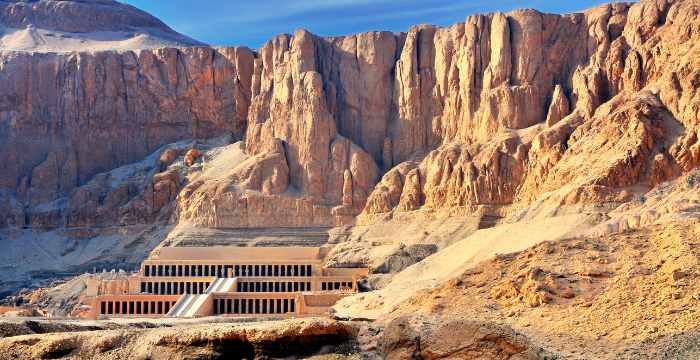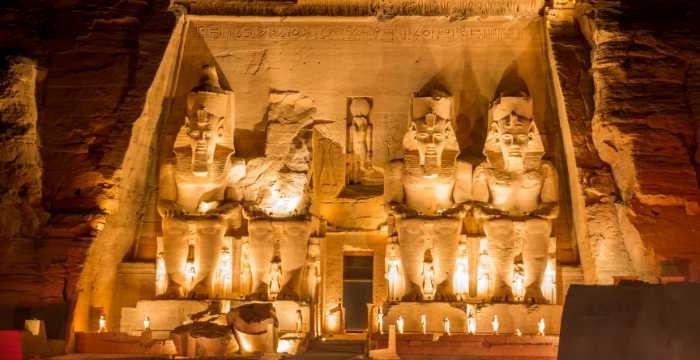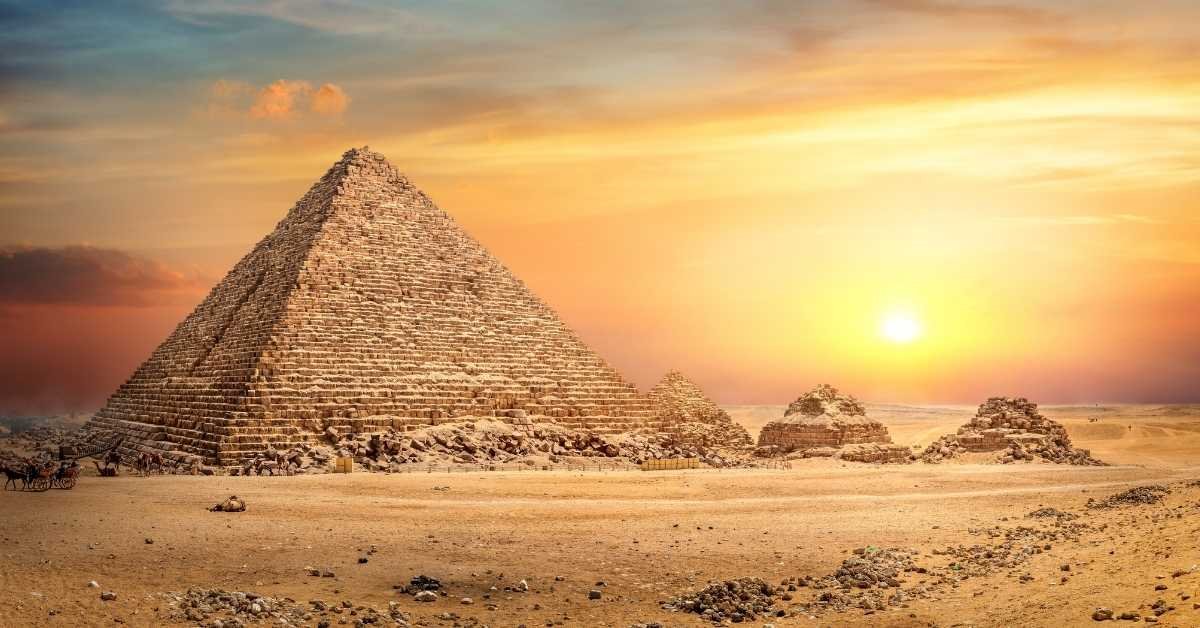The pyramids are enduring examples of egypt’s pyramids engineering prowess, particularly the Giza pyramids. We have been enthralled with these colossal constructions for centuries due to their amazing architectural design and the mysteries surrounding their origins and intended use.
Scholars and tourists alike are still enthralled with the quest to discover how and why the ancient egypt’s pyramids constructed.
The egypt’s pyramids are a gateway to comprehending the intricate web of human history and inventiveness, not just magnificent constructions from antiquity. This essay will examine the pyramids’ historical significance, the theories underlying their construction, and the sophisticated methods that their ancient builders may have employed.
We won’t stop at the walls of Giza instead will take you to some of egypt’s pyramids must-see locations which provide a window into the way of life in the historic cities and the civilization that once flourished by the Nile. Well set out on an adventure that will undoubtedly deepen your understanding of these architectural and cultural wonders from deciphering the hieroglyphs inside the pyramids to learning lesser-known details about their construction and discovering the rich cultural legacy of ancient Egypt beyond its pyramids.
Table of Contents
Historical Significance of the Pyramids
The primary purpose of the magnificent Egyptian pyramids a wonder of prehistoric engineering and architecture was to house the pharaohs the esteemed leaders of prehistoric Egypt. The Step Pyramid in Sakkara built for King Djoser circa 2780 BCE is the first pyramid of note. This pyramid which was created by the architect Imhotep was a major advancement over the conventional mastaba tombs and established the standard for pyramids to come.
Evolution of Pyramid Design

Pyramids’ architectural styles changed dramatically over time. Pyramids such as that of Djoser were step-based at first but in the days of Snefru, the idea of a real smooth-sided pyramid came into being. The Bent Pyramid at Dahshur which is renowned for its angle shift midway up to improve stability and the Red Pyramid the first effective attempt at constructing a traditional pyramid shape were two examples of Snefrus innovations.
The Great Pyramid of Giza

The apex of pyramid construction is exemplified by the Great Pyramid of Giza, built for Snefru’s son, Khufu. Covering over 13 acres, its construction was an immense undertaking, with each block weighing an average of over two tons. This pyramid, part of a larger complex that included two other major pyramids and the Sphinx, was a testament to the pharaoh’s power and the workers’ skill.
Cultural and Religious Significance
Pyramids were deeply embedded in the Egyptian culture and religion. They were built to ensure the continuation of the king’s life after death, housing not only their remains but also goods and valuables to support them in the afterlife. The walls of these pyramids, adorned with carvings and paintings, offer us insights into the life and beliefs of ancient Egyptians, making them crucial to our understanding of this ancient civilization.
Theories Behind the Construction of the Pyramids

Views Regarding the Pyramids Construction. Examining the many hypotheses underlying the construction of the pyramids provides insight into the inventiveness of ancient egypt’s pyramids society. Out of all of them, the Ramp Theory is the most widely accepted.
It suggests that a large workforce moved stone blocks across the desert using ropes and sleds. As some ancient wall paintings depict these sleds were intriguingly dragged over wet sand a technique thought to significantly reduce friction. The Water Shaft Theory which proposes that stones were floated to the building sites via specially built canals is another interesting theory. The stones could be carried easily by using floats made of cedar wood or inflated animal skins wrapped in papyrus thanks to these canals that were filled with water from the Nile.
This technique made transportation easier and made it possible to place the stones with little effort on the part of the user. Both theories demonstrate the egypt’s pyramids profound grasp of physics and their inventiveness in using the natural world to create architectural wonders. These revelations not only enhance our understanding of the pyramid’s remarkable technological capabilities but also highlight the pyramid’s cultural significance as representations of human labor and engineering skill.

Top Places to Visit in egypt’s pyramids
Abu Simbel
Abu Simbel, which is close to the Sudan border, shows both ancient egypt’s pyramids splendor and modern building skills. There are two temples at this place: one for Ramses II and another for Queen Nefertari. The large front of Ramses II’s temple has four big statues while inside it many detailed hieroglyphics show more than 100,000 characters. Due to the threat of being submerged by Lake Nasser, this UNESCO World Heritage Site was relocated. It’s a remarkable example of global rescue work.
Valley of the Kings and King Tutankhamen
The Valley of the Kings, in past times a place for pharaohs to be buried, has 62 tombs that are known and contain painted hieroglyphics. It’s important to visit this area if you want to learn about egypt’s pyramids wealthy funerary customs. Close by is the tomb of King Tutankhamun — found back in 1922 — still attracting attention from historians and tourists alike; they are intrigued by both this young ruler as well as what treasures were discovered within his resting spot.
Luxor
Luxor is the world’s largest open-air museum and has numerous monumental sites. The Karnak Temple Complex and Luxor Temple are magnificent for their ancient beauty. There is a wide range of ruins in the city that can be found on both the East and West Banks of the River Nile, making it an important place for people interested in old egypt’s pyramids culture.
Nile Cruise
A trip on a boat along the Nile River gives you a special chance to see many of egypt’s pyramids old places. On a felucca or modern cruise ship, tourists can comfortably witness the calm natural views and historical spots that run alongside this famous river. This travel is not just about relaxing but also an informative trip where guides provide details on each location as we pass by them.
By diving into the architectural brilliance of the pyramids, the article has exposed an impressive feature of ancient egypt’s pyramids civilization. It unveils secrets about how these monuments were built and for what purpose they were made. The understanding that pyramids are not just structures but also a symbols of human strength, cleverness, and culture is highlighted.
This journey into egypt’s pyramids history has shown us how pyramid design has evolved from mastaba to reach its ultimate form seen in the Great Pyramid at Giza along with methods used by our ancestors that helped keep this marvel intact over time.
More than just the pyramids, egypt’s pyramids history is shown in its grand temples and tombs, even on the edges of the Nile. A civilization that still captivates us. The suggestions for visits to Abu Simbel, Valley of Kings Luxor, and a special Nile cruise give us an understanding of life in ancient Egypt and also remind us strongly about our common human past.
These places with history make people think deeply about how mankind always seeks things like everlasting life, wisdom, and comprehension – showing egypt’s pyramids as an important part of telling the human story.
Frequently Asked Questions (FAQs)
Why were the pyramids in Egypt originally constructed?
The main reason for constructing pyramids was to make impressive burial places as a sign of honor towards pharaohs. This shows how much Egyptians value the concept of an afterlife. Pyramids were seen as doors into another world where pharaohs would continue their journey, and death was just the beginning of this new trip.
What recent discoveries have shed light on how the pyramids were built?
A Nile River branch, that was not seen before by people and ran close to more than 30 pyramids, has been revealed according to recent scientific findings. This finding is very important because it might explain how the ancient Egyptians transported big stone blocks for building these famous structures.
A fresh hallway, nearly 30 feet in length, has been discovered above the primary entryway of the Great Pyramid at Giza. This pathway that was concealed for about 4,500 years brings exciting chances for study and investigation into secret internal formations within this pyramid.
Why is it important to find an old Nile branch concerning the pyramids?
Scientists at the University of North Carolina Wilmington have discovered a submerged section of the River Nile that matches where the pyramids are located. This could mean that being near to this river was important for building these pyramids, as it would have made transportation easier for large construction materials.

